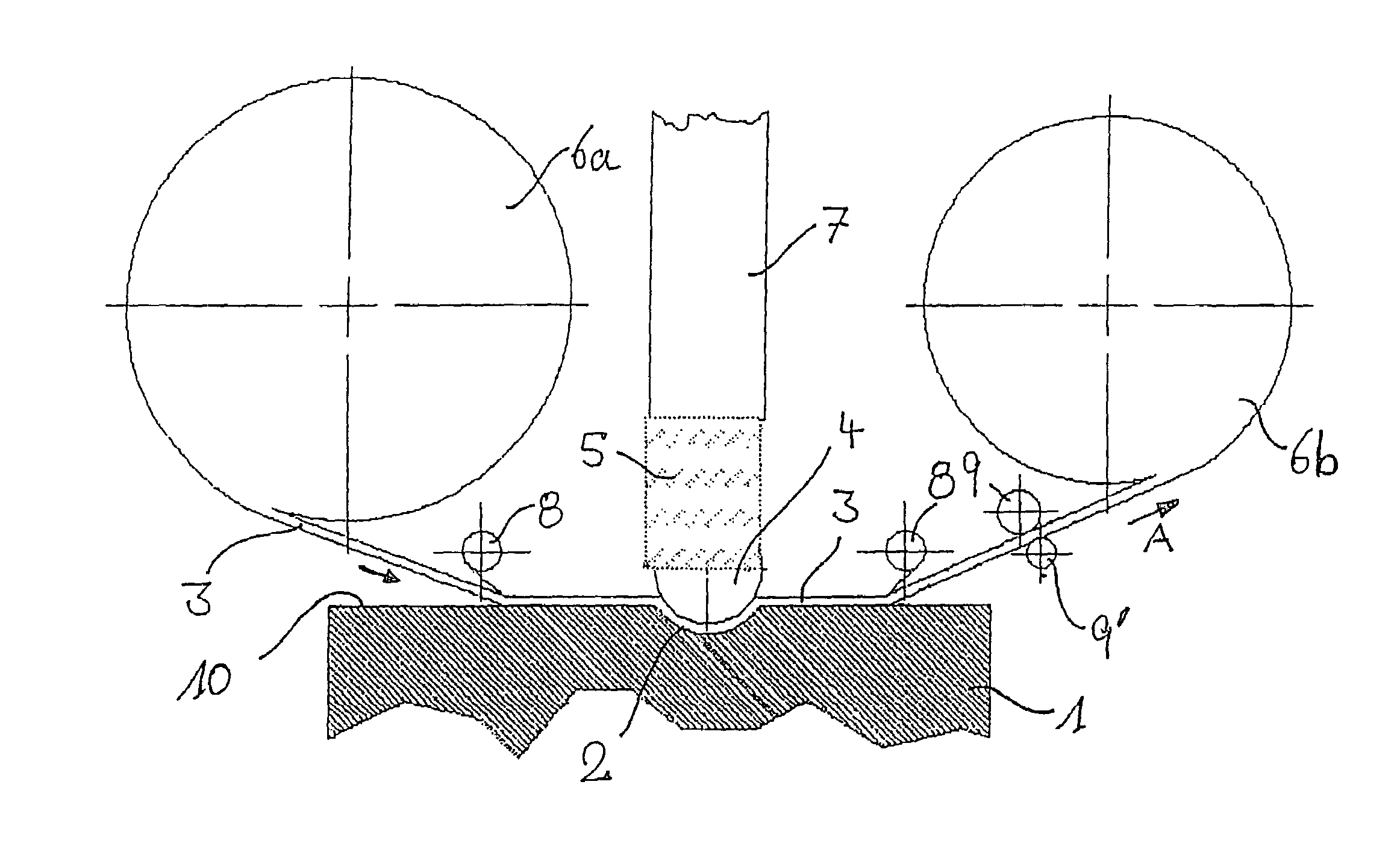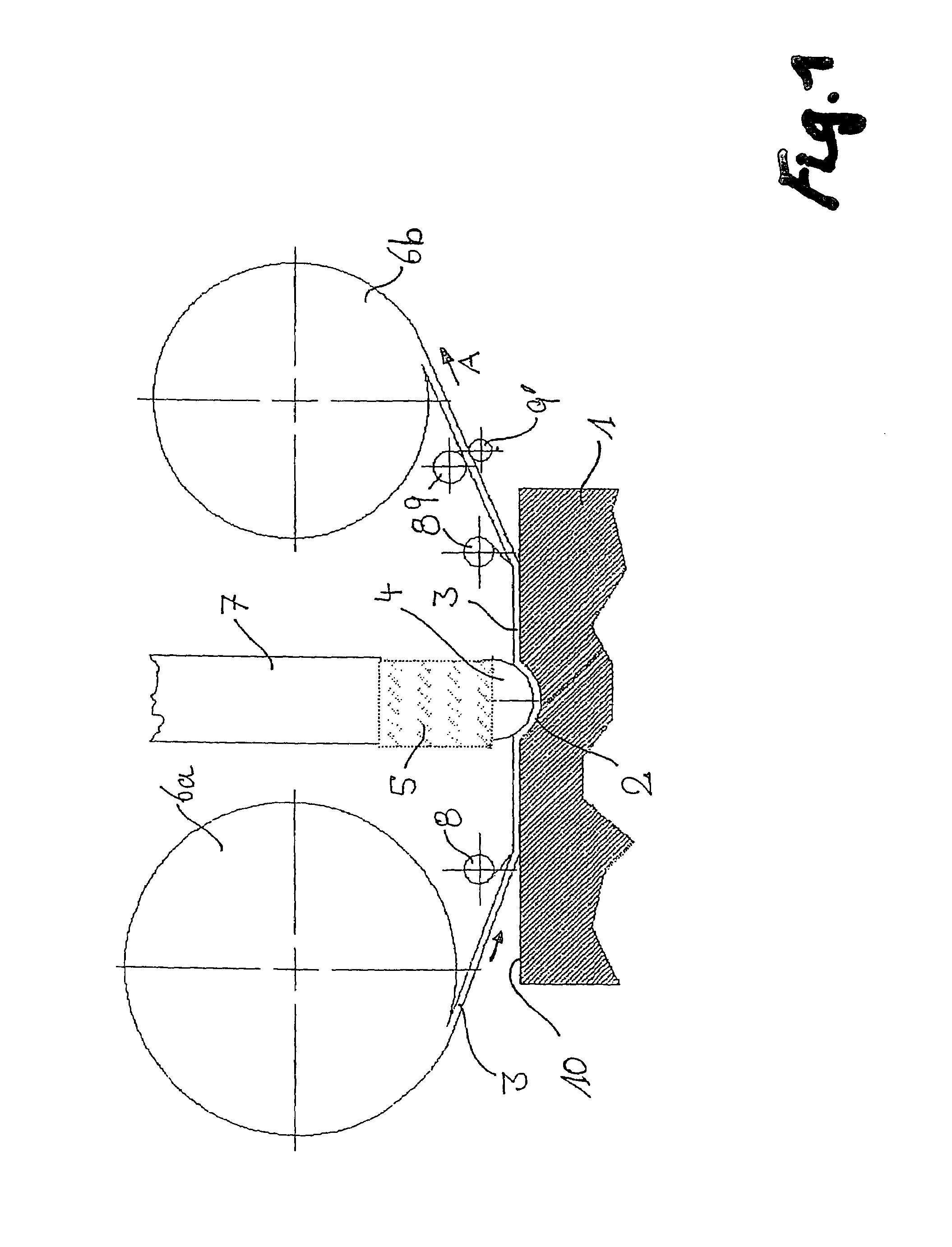Method and device for determination of the wear resistance of a surface
a technology of wear resistance and surface, applied in the direction of measuring devices, scientific instruments, instruments, etc., can solve the problems of affecting the wear resistance of the surface, and changing the grinding characteristics of the surface, so as to achieve the effect of reliable determining the wear resistance of extremely thin surface installations and coatings, favorable cost, and quick
- Summary
- Abstract
- Description
- Claims
- Application Information
AI Technical Summary
Benefits of technology
Problems solved by technology
Method used
Image
Examples
Embodiment Construction
[0023]Since the determination of the position of the counter-body can be made, in situ, the tape thickness variation can be eliminated from the measurement by running back the belt into the same position at the respective measurement points of time. So the position of the counter-body is always able to be determined with the same tape thickness. The measurement of the counter-body's position can be made when the tape is stopped at one patch of the tape, which has not been used for generating wear. This has a particular importance, when calotte-depths are measured in a range of 10 nm, while the tape thickness is usually >10 micrometers (typically 10–20 micrometers) and up to a thousand times of the produced calotte-depth. This also enables the resolution of calotte-depths of a scale of 1 nm. Customary magnet tapes can be used as tapes, which enable the marking and of a certain tape position, so that the belt can be run back into the marked position for the single measurement points o...
PUM
 Login to View More
Login to View More Abstract
Description
Claims
Application Information
 Login to View More
Login to View More - R&D
- Intellectual Property
- Life Sciences
- Materials
- Tech Scout
- Unparalleled Data Quality
- Higher Quality Content
- 60% Fewer Hallucinations
Browse by: Latest US Patents, China's latest patents, Technical Efficacy Thesaurus, Application Domain, Technology Topic, Popular Technical Reports.
© 2025 PatSnap. All rights reserved.Legal|Privacy policy|Modern Slavery Act Transparency Statement|Sitemap|About US| Contact US: help@patsnap.com


